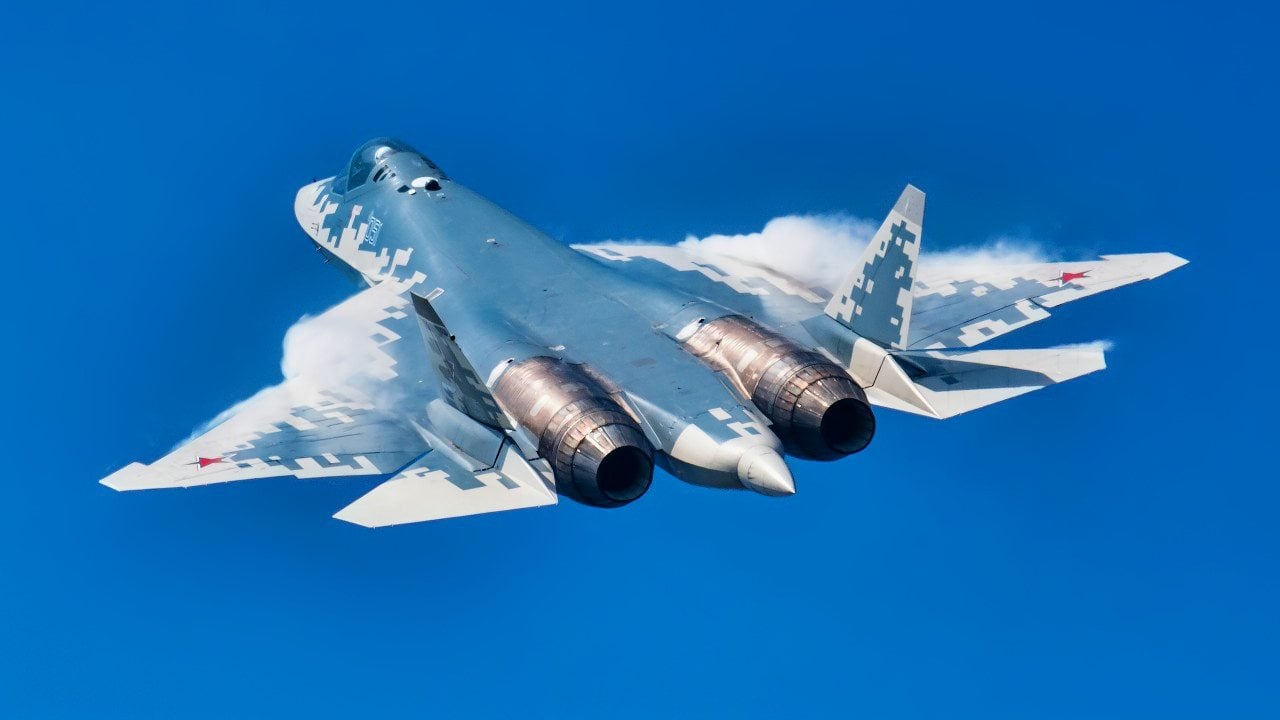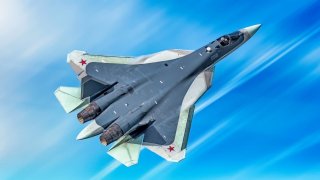Russia Is 'Afraid' to Send Su-57 Felon Fighter to War in Ukraine
The Russian Su-57 Felon, touted as a fifth-generation fighter to rival the U.S. F-22 and F-35, has seen limited use in Ukraine. Russia is cautious about deploying the complex and expensive aircraft in a war of attrition where cheaper, older systems have proven more practical.
Summary and Key Points: The Russian Su-57 Felon, touted as a fifth-generation fighter to rival the U.S. F-22 and F-35, has seen limited use in Ukraine. Russia is cautious about deploying the complex and expensive aircraft in a war of attrition where cheaper, older systems have proven more practical.

-Concerns about losing sensitive technology and damaging export potential contribute to this restraint.
-While the Su-57 has been used for long-range strikes from within Russian airspace, its limited combat role has led to skepticism about its capabilities. However, successful operations suggest the Su-57 is a formidable platform not to be underestimated.
Don’t Underestimate Russia’s Su-57 Felon
Russia’s fifth-generation warplane, the Su-57 (or “Felon,” according to its NATO reporting name), was to be Moscow’s answer to America’s F-22A Raptor or F-35 Lighting II warplane.
Much speculation has surrounded the warbird’s capabilities and its production value.
Despite what the Russian leadership touts about the Su-57 Felon being their most advanced warplane to date, with a conflict in Ukraine that Vladimir Putin has labeled as “existential” for the Russian state, the Su-57 Felon has been a rare sight in the unfriendly skies over the embattled Southern European state of Ukraine. In fact, most reports have it firing weapons into Ukraine and staying out of that contested air space.
This shouldn’t actually surprise anyone who understands what’s going on during the Ukraine War. The fact is that the systems everyone assumed would be decisive in a modern conflict have not been very helpful or as useful as the war planners who dreamed them up (and spent the tax dollars of their people on) to be.
For the Russians, the Su-57 Felon or the T-14 Armata Main Battle Tank (MBT) have been used sparingly but older systems, such as the Su-34 Flanker warplane or the T-72 MBT have been far more useful for the Russians in Ukraine.
Similarly, the ancient Soviet-era T-64 MBT has been far more useful for the Ukrainians than any of the tanks that NATO has handed over to Ukraine’s forces.
As for the Su-57 Felon, there are some issues that make the Russians reticent to use these birds. First, the Ukrainians have been very effective at complicating Russian designs for air dominance, thanks largely to the anti-aircraft systems that NATO has gifted to the Ukrainians.
Despite this, however, Russia continues to enjoy supremacy—albeit contested—over Ukraine's skies. However, the contested nature of Ukraine’s airspace makes Moscow a bit dyspeptic about the prospect of risking its vaunted Su-57s in combat.
Having Expensive Weapons is Not Always a Positive (the West Should Learn This Lesson)
The reason for this is simple: Su-57s are highly complex, expensive systems to build. The Ukraine War has proven itself to be an amalgamation of old-style wars of attrition (after all the frontline of Ukraine has resembled the trenches of World War I) and new-age technology—just not the new age tech that one would expect.
For instance, drones have defined the experience of both sides in this conflict. They are relatively cheap, they are user-friendly, and easy to replace.
Su-57 Felons divert critical—and limited—resources away from cheaper, less complex military platforms. If many Su-57s were lost in combat, replacing them would be a bear. Before anyone in the West gets cocky at that thought, it’s important to remember that if the US lost F-22s or F-35s in any significant amount, it would be just as catastrophic for America’s defense industrial base. It’s easier for Russia to pour their resources into building cheaper, older airframes, like the Su-34 or Su-35.
Besides, Russia fears losing sensitive technology in combat, such as their fifth-generation warplane, that could give insight into their military secrets and damage their prestige. Meanwhile, in the international community, there are increasing amounts of skepticism directed toward the Russian Su-57, which was once believed to be a real advantage for Russia, both on the battlefield and in terms of its export potential.
Underestimate the Su-57 at Your Own Peril
The Su-57, a potential exportable aircraft, seems more akin to the American Lockheed Martin-built F-35. However, Russia's fear of deploying the Su-57 decisively on the frontline of Ukraine has caused many potential buyers to balk at purchasing a relatively unproven bird.
Again, Russia's reticence is less likely because they believe the plane is not capable and more likely because even an advanced, fifth-generation warplane can be taken down by massive amounts of anti-aircraft systems.
Still, reports that the Ukrainians managed to clip a Su-57 while it was on an airfield tarmac far removed from the frontline have given potential investors into the Su-57 more pause.
As if to allay fears of the Su-57 being overhyped, Russia has allowed for this plane to be used in combat—albeit in a very limited fashion. Felons have been used by Russia to conduct long-range strikes, especially using cruise missiles, from within Russian airspace as opposed to crossing over into contested Ukraine.
These strikes were mostly successful, by the way, indicating that the Su-57 is a potent bird that should not be underestimated.
Author Experience and Expertise: Brandon J. Weichert
Brandon J. Weichert, a National Interest national security analyst, is a former Congressional staffer and geopolitical analyst who is a contributor at The Washington Times, the Asia Times, and The-Pipeline. He is the author of Winning Space: How America Remains a Superpower, Biohacked: China’s Race to Control Life, and The Shadow War: Iran’s Quest for Supremacy. His next book, A Disaster of Our Own Making: How the West Lost Ukraine, is due October 22 from Encounter Books. Weichert can be followed via Twitter @WeTheBrandon.
All images are Creative Commons or Shutterstock.
From the Vault
Russia Freaked Out: Why the U.S. Navy 'Unretired' the Iowa-Class Battleships
Battleship vs. Battlecruiser: Iowa-Class vs. Russia's Kirov-Class (Who Wins?)


